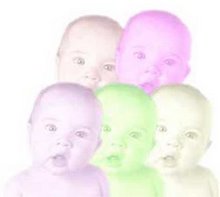
Cloning has been going on in the natural world for thousands of years. A clone is simply one living thing made from another, leading to two organisms with the same set of genes. In that sense, identical twins are clones, because they have identical DNA. Sometimes, plants are self-pollinated, producing seeds and eventually more plants with the same genetic code. Some forests are made entirely of trees originating from one single plant; the original tree spread its roots, which later sprouted new trees. When earthworms are cut in half, they regenerate the missing parts of their bodies, leading to two worms with the same set of genes.
The first cloning was in the late 1800's by Hans Dreisch. Dreich's experiments involved sea urchins which he chose because of the ability to grow without intervention of their mothers and the embryo cells were large enough to split. In 1902 another scientist produced a clone of a salamander he would be able to prove that no genetic material was lost as cells grew and divided.
There were no major advances in cloning until November of 1951, when a team of scientists in Philadelphia working at the lab of Robert Briggs cloned a frog embryo. They took the nucleus out of a frog embryo cell and used it to replace the nucleus of an unfertilized frog egg cell. Once the egg cell detected that it had a full set of chromosomes, it began to divide and grow. This was the first time that this process, called nuclear transplant, was ever used, and it continues to be used today, although the method has changed slightly.
In 1986 two teams working independently in different parts of the perform the same type of clone on a mammal. One team working on a cow embryo and the other team a sheep's embryo. More work was done, and on July 5, 1996, a lamb was born, cloned from a frozen mammary cell from another adult sheep. Wilmut, who names his animals very creatively, named her Dolly after Dolly Parton. Although Dolly was just a step in a long experiment, the press descended upon the first animal cloned from an adult. Other scientists were critical -- Dolly took 277 tries to create, and other labs were unable to reproduce the results. In addition, it took over a year for the institute to test Dolly's DNA to make sure that it was indeed the same as that of the frozen mammary cells.

No comments:
Post a Comment